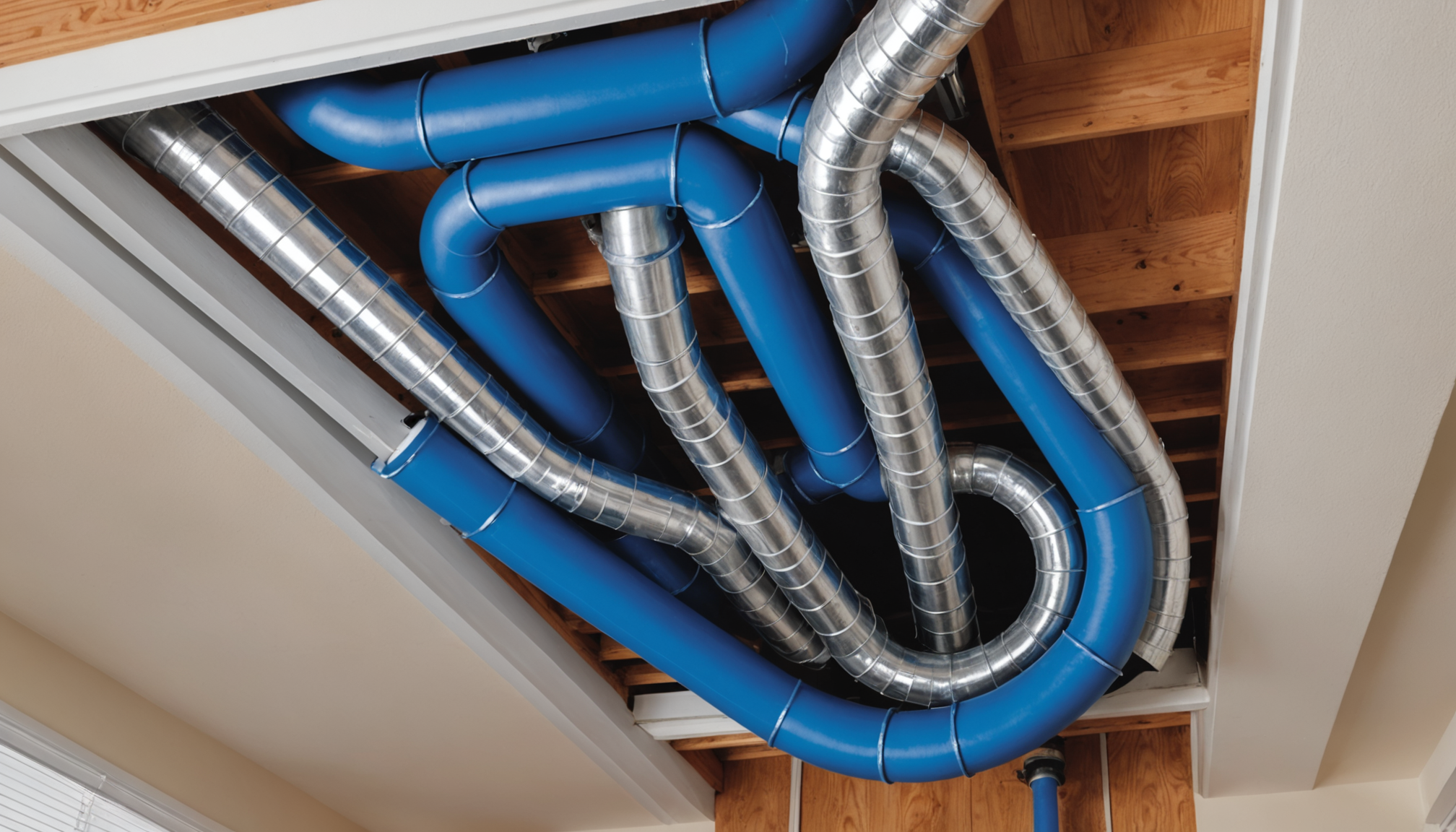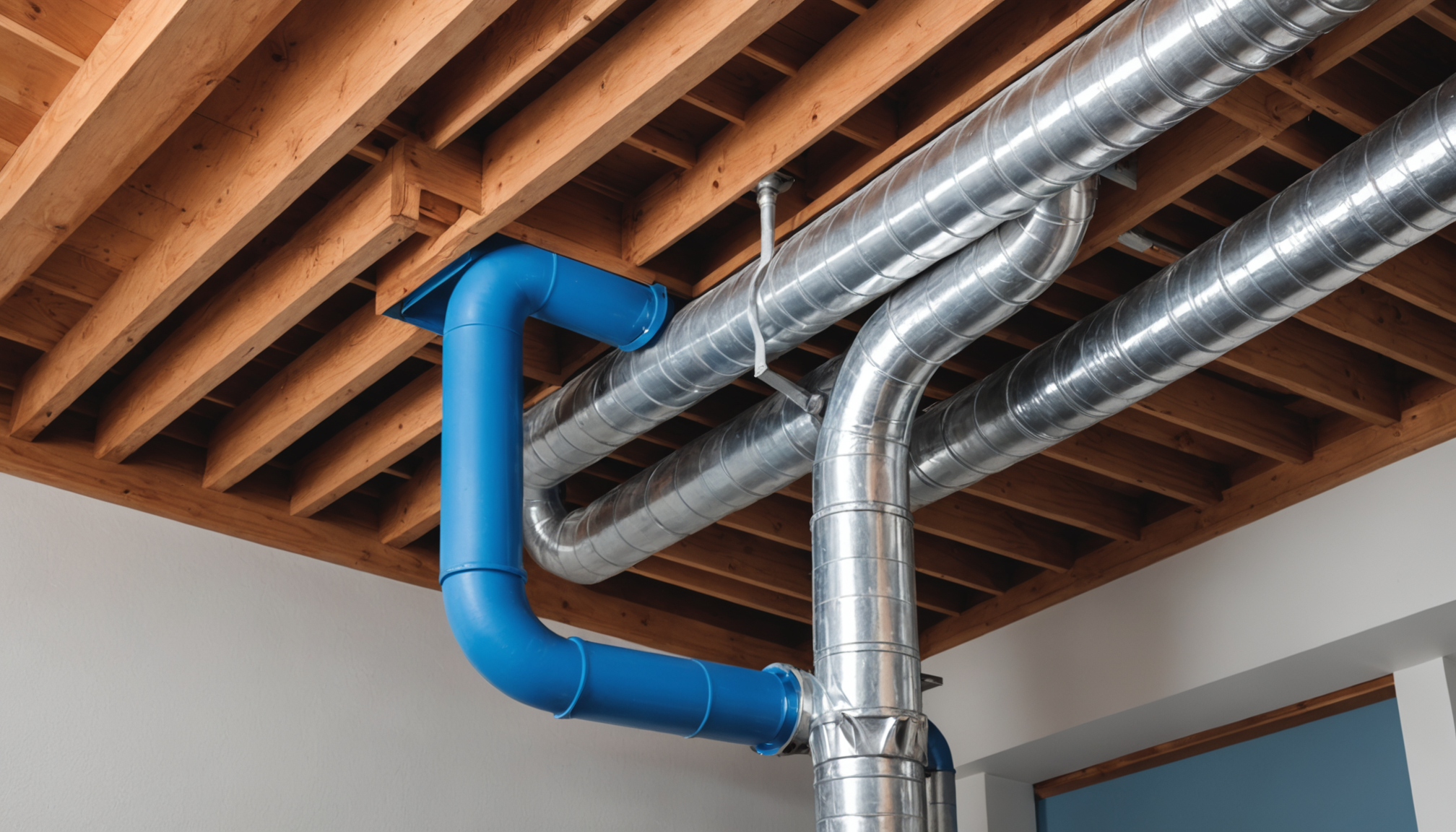Energy efficiency is an increasingly important concern for homeowners, particularly in regions like St. Louis where extreme weather fluctuations demand significant energy usage for heating and cooling. An efficient home not only contributes to environmental health by reducing carbon footprints but also enhances comfort while saving money on energy bills. Among the key components impacting a home’s energy efficiency are the HVAC systems and the associated ductwork, which can account for a major portion of a household’s energy consumption.
Understanding energy efficiency begins with recognizing how energy is used and lost in a typical home environment. The U.S. Department of Energy estimates that duct systems in homes can lose between 20% to 30% of the air that moves through them due to leaks, holes, and poor connections. In St. Louis, where seasonal changes are pronounced, such inefficiencies can significantly ramp up energy consumption, forcing HVAC systems to work harder and leading to higher utility costs. For residents looking to enhance their home’s energy efficiency, a well-maintained duct system is crucial.
Homeowners must also be cognizant of the broader implications of energy efficiency. Besides financial benefits, improving the energy performance of a home supports environmental sustainability, aligning with local and national efforts to combat climate change. As energy efficiency becomes a priority, understanding how and where improvements can be made is crucial. Central to these discussions are HVAC systems and the roles they play in maintaining an energy-efficient home.
In essence, a focus on energy efficiency in homes involves a holistic view that covers insulation, airtight construction, and ventilated spaces. Understanding the interplay of these elements can help homeowners save on energy costs while contributing positively to the environment. Steps such as regular maintenance of HVAC systems and proactive duct sealing play a significant role in achieving this efficiency, making them invaluable to any energy conservation strategy.
common issues with duct systems
When examining the common issues with duct systems, it’s vital to understand the significant role these components play in the overall energy efficiency of a home, especially in climates like St. Louis where temperatures can vary dramatically throughout the year. Unfortunately, ductwork in many homes is often overlooked, leading to energy inefficiencies that can compromise both comfort and cost-effectiveness.
One of the most prevalent problems with duct systems is air leaks. Over time, ducts can develop cracks, holes, or loose connections due to age, poor installation, or damage. These leaks allow conditioned air to escape into areas like attics, basements, or crawlspaces rather than effectively heating or cooling the parts of the home where it is needed. This inefficiency not only leads to increased energy bills but also forces the HVAC system to work harder, which can reduce its lifespan.
Improperly sealed or connected ducts can also lead to pressure imbalances within the home. This situation can cause certain rooms to be warmer or cooler than others, leading to discomfort and increased use of energy as the HVAC system attempts to compensate for the uneven distribution of air. In addition, improper duct insulation can exacerbate these problems, especially in areas of extreme temperature changes like St. Louis.
Moreover, duct systems can accumulate dust, allergens, and other debris, diminishing indoor air quality. This is particularly concerning for households with members who have allergies or respiratory issues. Regular maintenance and cleaning can mitigate this issue, contributing to both better health and energy efficiency.
Homeowners in St. Louis should be particularly vigilant about these common duct system issues due to the potential impact on their energy consumption and comfort. Regular inspections and maintenance can help identify and rectify inefficiencies, ensuring that energy use is optimized throughout the seasons.
- Air leaks in duct systems can significantly increase energy bills by allowing conditioned air to escape into uninhabited spaces.
- Uneven heating or cooling across rooms may indicate issues with duct sealing or connections, resulting in pressure imbalances.
- Poor duct insulation can compound energy inefficiencies, particularly during extreme weather conditions.
- Accumulation of dust and allergens in ducts can affect indoor air quality, which is a concern for those with allergies or respiratory conditions.
- Regular inspection and maintenance of duct systems can prevent energy loss and improve the overall efficiency of HVAC systems.
benefits of duct sealing
Proper duct sealing offers numerous advantages for homeowners, especially in areas like St. Louis where extreme temperatures can lead to significant HVAC system strain. One of the primary benefits of duct sealing is the noticeable improvement in energy efficiency. By ensuring that air leaks are minimized, homeowners can prevent the loss of conditioned air. This means that the HVAC system doesn’t need to work as hard to maintain a consistent temperature throughout the home, which leads to lower energy bills.
Another benefit of duct sealing is enhanced indoor comfort. Sealing the ducts properly ensures that warm or cool air is distributed evenly throughout the house. This eliminates the frustrating experience of having some rooms significantly warmer or cooler than others. As a result, families can enjoy a more consistent indoor climate, making living spaces more comfortable regardless of the weather outside.
Duct sealing also contributes to improved indoor air quality. Sealing helps prevent dust, allergens, and pollutants from being drawn into the system and circulated through the home. For families with members who have allergies or respiratory issues, this can be particularly beneficial. Clean air circulation is critical in maintaining a healthy indoor environment and reducing the potential for allergy flare-ups or respiratory complications.
Moreover, duct sealing can extend the lifespan of your HVAC system. When the system is forced to work harder due to leaks, it experiences more wear and tear, potentially leading to more frequent repairs or even premature replacement. By reducing strain on the system, duct sealing can help keep your HVAC system running efficiently for longer periods.
Additionally, duct sealing supports environmental sustainability. By decreasing energy consumption, homeowners can reduce their carbon footprint. In a city like St. Louis, where energy demand can be high due to fluctuating weather conditions, contributing to a reduction in overall energy usage aligns with community efforts to promote environmental stewardship and energy conservation.
Lastly, duct sealing is a cost-effective investment. Though there is an initial cost involved, the savings on energy bills, reduced maintenance requirements, and potential increase in home value make it a wise investment. Homeowners can quickly see a return on investment through energy savings, making duct sealing an economically prudent decision.
Overall, duct sealing offers numerous benefits that can significantly enhance home energy efficiency, comfort, air quality, and financial savings, providing multiple incentives for homeowners to consider this crucial step in home energy management.
insulation types and their impact
Insulation plays a crucial role in any home’s energy efficiency, acting as a barrier to heat flow and providing an essential means of maintaining thermal comfort indoors. In St. Louis, where temperatures can swing from icy winters to sweltering summers, choosing the right insulation type is essential for optimizing energy use and ensuring your HVAC system operates efficiently.
One popular type of insulation is fiberglass, valued for its cost-effectiveness and ability to reduce heat transfer. It’s commonly used in attics, walls, and duct systems due to its versatility and easy installation. It’s crucial to ensure that fiberglass insulation is installed without gaps, as any voids can severely diminish its insulating properties, leading to wasted energy and compromised comfort.
Spray foam insulation offers another approach, providing excellent thermal resistance and the added benefit of air sealing. This type of insulation can be ideal for filling gaps and cracks in existing structures, thereby significantly reducing air leakage. For homeowners aiming to maximize their energy efficiency in St. Louis, spray foam can be an excellent choice, especially around ducts and other areas prone to energy loss.
Cellulose insulation, noted for its eco-friendliness, is made from recycled paper products and treated to resist pests and fire. With its higher density, cellulose can effectively fill irregular spaces, which is perfect for older homes that may have settled or shifted over time. This type of insulation can dramatically improve energy conservation by minimizing air infiltration and thermal bridging.
Rigid foam boards are another option, offering high insulating value per inch of thickness and resistance to moisture, which can be especially beneficial in the variable St. Louis climate. These are particularly useful in basements and exterior walls where moisture control is a concern, providing both insulation and structural support.
Each insulation type has unique properties and potential drawbacks, and selecting the right one requires careful consideration of specific home needs and local climate demands. It’s also essential to pair insulation with proper duct sealing to enhance overall HVAC efficiency. By choosing and installing the right insulation, homeowners in St. Louis can reduce energy bills, improve indoor comfort, and contribute positively to environmental sustainability.
For those looking to make their homes more energy-efficient, considering an insulation upgrade is a smart and proactive step. Start by assessing your current insulation levels and identify areas where improvements can be made, consulting with professionals if necessary. Remember, investing in adequate insulation is not merely a means to an end but a pivotal part of comprehensive home energy management that pays dividends in comfort, savings, and sustainability. Let this drive you toward creating a more efficient, cost-effective, and eco-friendly home environment in St. Louis.
practical steps for homeowners in st. louis
- Why should I consider duct sealing in St. Louis?
- Duct sealing in St. Louis is crucial due to the city’s extreme temperature fluctuations. Proper sealing prevents conditioned air from escaping, ensuring your HVAC system runs efficiently and that you’re not wasting energy, which also reduces your utility bills.
- How often should duct systems be inspected?
- It’s advisable to have your duct systems inspected every 3 to 5 years. Regular inspections help identify issues like leaks, poor insulation, or blockages early, ensuring optimal energy efficiency and extending the lifespan of your HVAC system.
- Can I do duct sealing and insulation myself, or should I hire a professional?
- While some duct sealing and insulation can be a DIY task, hiring a professional is recommended for thoroughness and effectiveness. Professionals have the tools and expertise to identify hidden issues and ensure the job is done correctly, maximizing energy efficiency and cost savings.
- What are the signs that my ducts need sealing?
- If your home experiences uneven temperatures between rooms, increased energy bills, or if your HVAC system runs more frequently than usual, these could be signs that your ducts need sealing. Visible dust and reduced air quality may also indicate that sealing is necessary.
- What benefits can I expect after insulating my home?
- Proper insulation can significantly decrease energy bills by maintaining optimal temperature levels throughout your home, regardless of the season. You’ll also enjoy enhanced indoor comfort, reduced wear and tear on your HVAC system, and a better overall energy efficiency in your St. Louis home.

